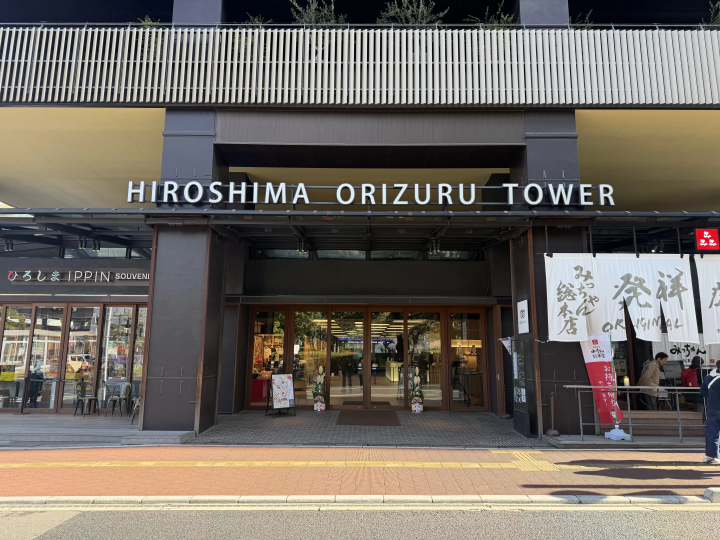Autumn in Japan: Weather, What to Wear, Fall Foliage 2025

Autumn in Japan is the season of red foliage and festivals. Learn about the weather in September, October, and November, temperatures, what to wear, and travel tips.
Autumn in Japan: The Season of Stunning Foliage

Picture courtesy of Kifune Shrine ©Yasuhiro Imamiya
Autumn in Japan, from mid-September through November, offers stunning fall foliage, pleasant travel weather, unique events, and delectable seasonal cuisine.
Read on for advice on what to pack, the best spots for viewing autumn leaves, and must-try seasonal foods.
Autumn in Japan: Weather and Travel Tips
1. September Weather in Japan: What to Wear
2. October Weather in Japan: What to Wear
3. November Weather in Japan: What to Wear
Things to Do in Autumn in Japan
4. Enjoy the Fall Foliage
5. Harvest Moon Viewing Events and Festivals
6. Autumn Food Specialties
7. The Best Autumn Destinations in Japan
- Kyoto
- Hokkaido
- Tokyo
- Hakone
September Weather in Japan: Average Temperatures
September in Japan typically marks the transition from summer to autumn.
The weather is often still warm or hot, especially at the beginning of the month, with temperatures ranging from around 20°C to 30°C (68°F to 86°F).
In the afternoon, temperatures tend to be around 23ºC to 28ºC (73°F to 82°F) and tend to drop to about 18ºC to 21ºC (64°F to 70°F) in the morning and at night.
September is still typhoon season in Japan, so there is a high chance of heavy rain and storms, especially in southern and eastern Japan. Also, humidity levels tend to be high, making the climate feel quite muggy before the cooler autumn air settles in later in September.
In terms of travel, September is the best time to enjoy the scenery of silver grass fields and the Harvest Moon Festival, known as Tsukimi in Japan.
What to Wear in September in Japan
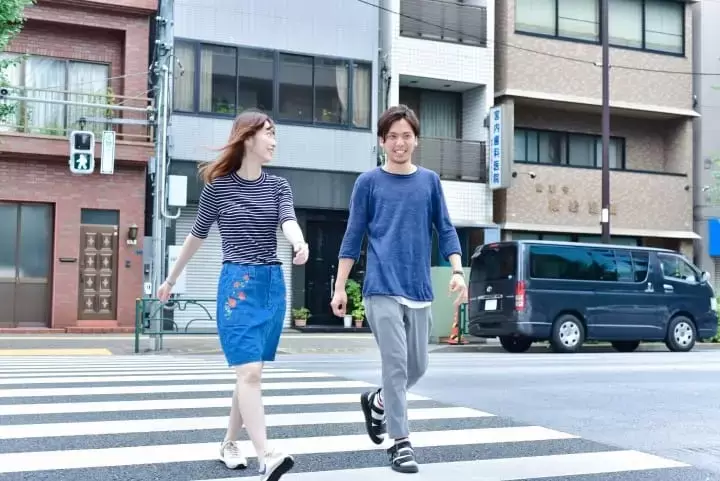
Expect warm afternoons in September suitable for short sleeves. However, mornings and evenings can be cool, so pack long-sleeved shirts or light cardigans for layering.
October Weather in Japan: Average Temperatures
October in Japan generally brings cooler and more comfortable weather, marking the middle of autumn. Temperatures typically range from around 10°C to 20°C (50°F to 68°F), depending on the region.
Afternoon temperatures range from 19ºC to 23ºC (66°F to 73°F), and morning temperatures tend to be around 14ºC to 18ºC (57°F to 64°F).
In the second half of the month, temperatures gradually cool, and the weather becomes crisper and more refreshing. Rainfall tends to decrease compared to September, and the skies are often clearer, making it a popular month for outdoor sightseeing.
October is still too early for autumn foliage in most parts of Japan. However, the fall colors gradually start to appear in northern regions like Hokkaido and Tohoku. It's the season of pink cosmos flowers and fiery red kochia bushes.
What to Wear in October in Japan
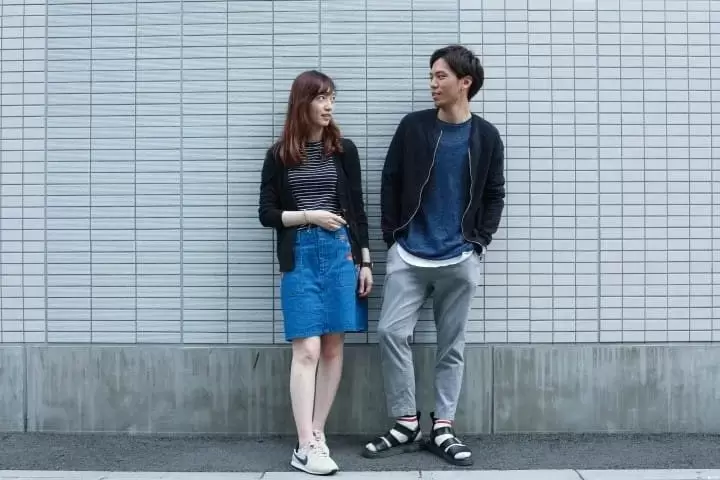
For sunny October afternoons, long-sleeved shirts are a comfortable choice. However, mornings and evenings can be chilly, so bring a sweater or a hooded jacket for added warmth.
November Weather in Japan: Average Temperatures
November in Japan typically brings cool, crisp, and refreshing weather, signaling the full arrival of autumn. Temperatures usually range from around 7°C to 15°C (41°F to 59°F), with cooler conditions in the mornings and evenings.
Afternoon temperatures are about 14ºC to 18ºC (57°F to 64°F) while morning and evening temperatures are 7ºC to 12ºC (45°F to 54°F).
The weather is generally stable and dry, making it an excellent time for sightseeing and outdoor activities. In Kyoto and Tokyo, the autumn foliage reaches its peak in late November - early December, creating stunning scenic views.
In northern parts like Hokkaido, it's often quite cold, and snow may start to fall later in the month.
What to Wear in November in Japan
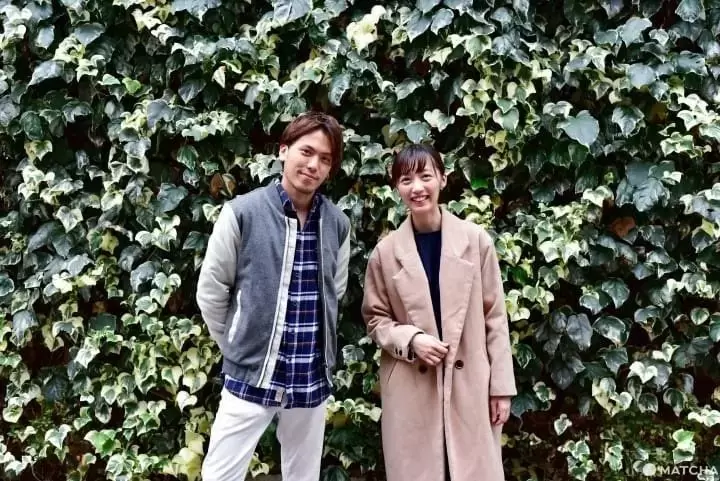
We recommend wearing a jacket or sweater during the day, and a coat may be necessary on windy days for extra warmth.
Read also
Enjoy the Autumn Foliage
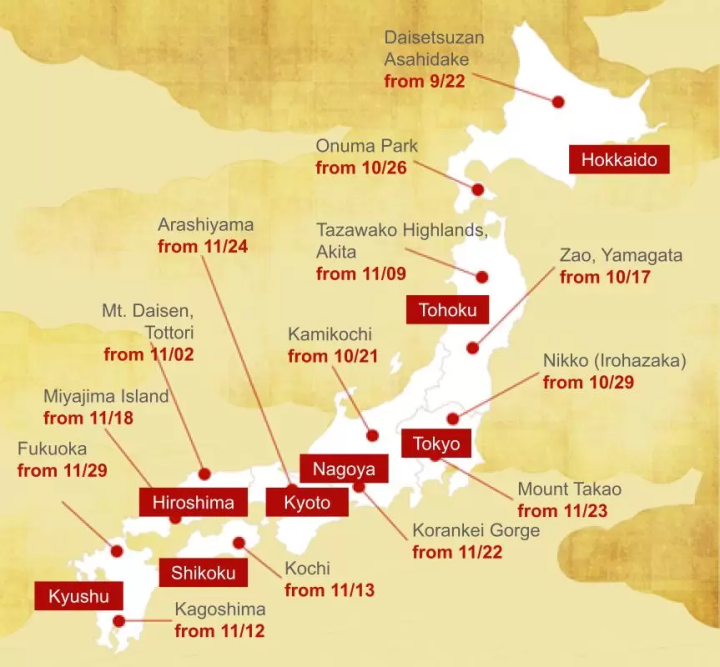
2025 fall foliage map based on information from Weathernews
Viewing the fall foliage is one of the most awaited activities in Japan.
Autumn is the season when the leaves of deciduous trees turn to brilliant shades of red and yellow. The autumn colors gradually make their way from the northernmost prefectures down to the south.
The timing of color change depends on annual climate variations, but on average the best time to see fall leaves in each area is as follows: from late September through mid-October in Hokkaido, from mid to late November in Tokyo and Osaka, and from late November to early December in Kyoto.
Read also
2. Moon Viewing Events - Tsukimi
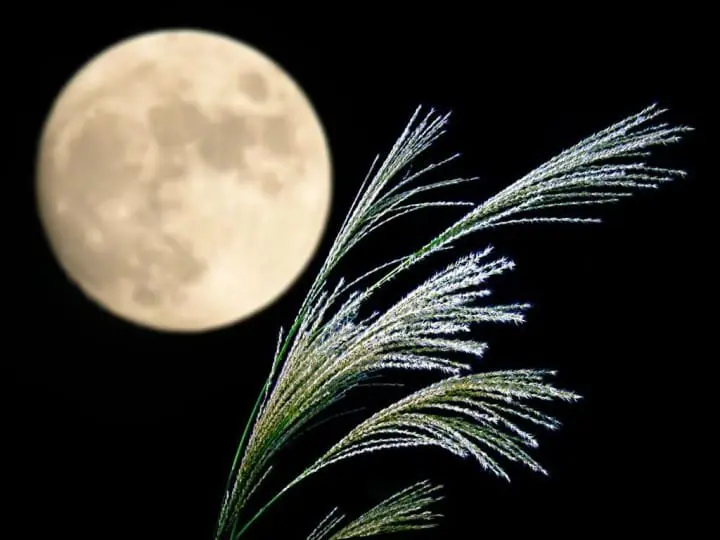
Early to mid-fall, there are various events related to tsukimi (moon viewing). Tsukimi is a traditional custom that goes back to the Heian Period.
Groups of friends and family get together to view the moon while enjoying simple desserts like dango, sweet glutinous rice on skewers.

Fall is a season with many festivals such as Osaka's Kishiwada Danjiri Festival in mid-September, which is rooted in the prayers for a good harvest. Intricately carved wooden festival floats are paraded throughout Kishiwada in Osaka.
October is the month of the Sawara Grand Festival in Chiba. It was designated an Intangible Folk Cultural Property in Japan, as it boasts a history of at least 300 years.
Halloween has gained popularity in recent years as well. Halloween celebrations are held in all the major cities of Japan. Tokyo Disney Resort and Universal Studios Japan usually have events related to Halloween.
As cosplay is loved in Japan, Halloween is a great chance for everyone to wear their favorite costumes and gather in the streets. Shibuya, Kawasaki, and other large metropolitan areas host large-scale Halloween events with thousands of participants.
Read also
Autumn Food in Japan

The delicious food is one of the major highlights of the fall season in Japan. In addition to the fresh vegetables and other crops, fish like bonito and saury, fruit like persimmons, pears, and chestnuts, matsutake mushrooms, and ginkgo nuts are some of the best dishes. These seasonal ingredients will most likely make an appearance in the food you eat during your travels.
Seasonal wagashi (Japanese sweets), made with chestnuts persimmons, and kabocha pumpkin, are a must-try in the autumn.
Another sweet snack is yakiimo (roasted sweet potato). Yakiimo are sold in specialty stores and supermarkets but also at food stands on the street during festivals.
Read also
The Best Autumn Destinations in Japan
Autumn leaves paint the whole country crimson and gold. For those who want to make the most out of their fall trip to Japan, we suggest traveling to the following destinations to enjoy the beautiful outdoors and the leaves.
Kyoto

Picture courtesy of Japan National Tourism Organization
Kyoto is undoubtedly one of the best areas for viewing the spectacular fall landscape. Places like Kiyomizudera Temple and Tenryuji in Arashiyama are very famous for their beautiful fall leaves, which create a breathtaking background to the traditional temples and shrines.
Read also
Many of the temples hold foliage illuminations at night. Kodaiji Temple is particularly famous for its magnificent display. Venture north beyond the city center, towards the Kitano and Kitayama areas if you want to avoid the crowds.
Read also
Hokkaido
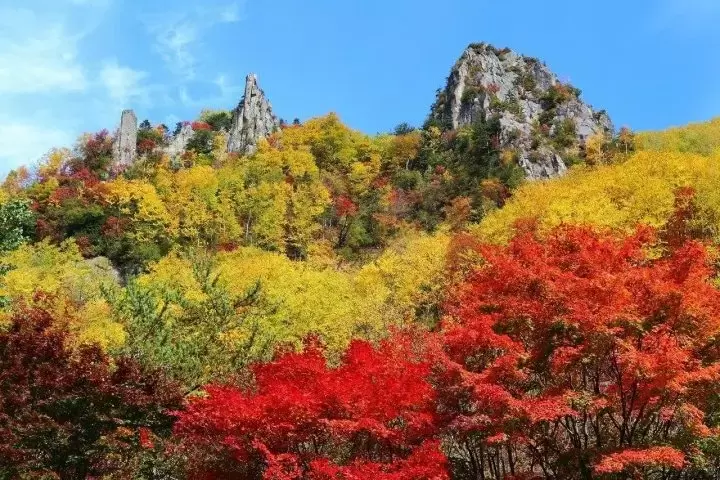
Sounkyo Gorge in Daisetsuzan National Park. Photo by Pixta
The northernmost prefecture of Hokkaido is home to breathtaking scenery all year round but it becomes all the more beautiful in the fall when the leaves change color. Visit between late September or October to see the best of the koyo (fall colors).
Since Hokkaido is quite large, you might want to rent a car to move around more easily, though many of the places are accessible via public transportation.
Well-known areas to see fall leaves include the Onuma Quasi-National Park north of Hakodate and Mt. Moiwa in Sapporo.
Read also
Tokyo
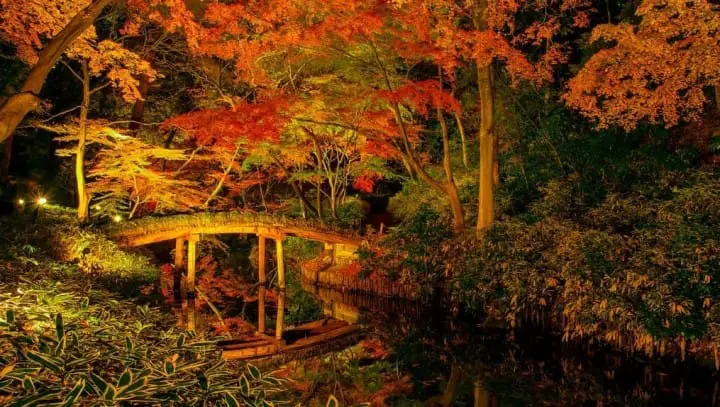
The metropolis of Tokyo also boasts many great places to view the beautiful fall colors. Certain areas will be crowded but transportation within the city should not be an issue.
The crimson foliage in Yoyogi Park provides a respite from the bustling areas of Shibuya and Harajuku.
Rikiguen Garden (pictured above), Koishikawa Korkuen Garden near Tokyo Dome, or Higo-Hosokawa Garden with its amazing autumn light-ups are just some of the famous gardens in Tokyo worth visiting in autumn.
Read also
Hakone

Hakone in Kanagawa Prefecture, south of Tokyo, is well-known for onsen (hot springs). In autumn, the landscape will be sprinkled with shades of red and gold.
Located around an hour and a half away from Shinjuku in Tokyo, Hakone is ideal for a day trip or a weekend getaway. At Lake Ashi you can get a glimpse of Mt. Fuji with the autumn leaves on a clear day. You can also travel to Sengoku Plateau and surround yourself with an endless field of golden pampas grass.
Read also
Relish Autumn in Japan
Autumn is the season of pleasant temperatures, beautiful fall foliage, festivals, as well as delicious food. It is the ideal time to travel to Japan! We hope the information above helps you to plan and enjoy your trip.
FAQ
What is the average temperature in autumn in Japan?
Autumn in Japan typically spans from September to November. During this season, the average temperatures can range from about 20°C to 25°C (68°F to 77°F) in different parts of the country. As autumn progresses from September into October and November, temperatures generally cool down. Japan's diverse climate, influenced by its geographical expanse, means that temperature variations can be significant across regions, from the northern island of Hokkaido to the southern islands like Okinawa. For the most accurate and current information on average autumn temperatures in Japan, consulting local meteorological data or weather services specific to the area of interest is recommended.
What woiuld be a good 7-day autumn itinerary in Japan?
For a comprehensive 7-day autumn exploration of Japan, begin with two days in Tokyo, taking in Sensoji Temple, Tokyo Skytree, Shibuya, Harajuku, and Meiji Shrine. If it's the end of November, don't miss out on the autumn foliage light-up at Rikugien Garden. Move on to Hakone for a day of autumn foliage, hot springs, and Mount Fuji views. Spend two days in Kyoto, visiting Fushimi Inari Shrine, Arashiyama Bamboo Grove, Kinkakuji (Golden Pavilion), Ryoanji Temple, Higashiyama district, and Kiyomizudera Temple. Explore Nara for a day with Todaiji Temple and Nara Park's deer. Lastly, end your journey in Osaka to see Osaka Castle, Dotonbori district, and enjoy the renowned street food and nightlife scenes. This itinerary seamlessly blends cities, temples, natural landscapes, and cultural experiences, providing a holistic immersion into Japan's autumnal allure.
Is autumn a good time to visit Japan?
Autumn is a favored season to visit Japan due to its mild weather, captivating fall foliage known as "koyo," and an array of cultural festivals and events. The comfortable temperatures make outdoor activities enjoyable, while the vibrant colors of red, orange, and yellow leaves create picturesque landscapes popular for sightseeing. With fewer crowds compared to the spring season, autumn provides a balanced mix of pleasant weather, cultural experiences, and culinary delights, making it an excellent time to explore Japan's diverse attractions.
What are the characteristics of autumn in Japan?
Autumn in Japan is a captivating season marked by vibrant fall foliage, mild weather perfect for outdoor activities, and a rich culinary scene featuring seasonal delights like chestnuts and mushrooms. The period also witnesses a diverse array of cultural festivals such as the Takayama Autumn Festival, offering a glimpse into Japan's traditional heritage. Autumn in Japan invites travelers to relax in hot springs amidst the changing colors of nature, participate in harvest festivities, and explore the country's unique arts and crafts traditions. With travel opportunities abound, from renowned foliage sites like Kyoto to countryside gems, Japan's autumn encapsulates a harmonious blend of natural beauty, cultural richness, and culinary pleasures awaiting discovery.
Is autumn rainy in Japan?
Autumn in Japan is generally known for being a relatively dry season in many parts of the country. While the weather can vary depending on the region, autumn is typically characterized by clear skies, mild temperatures, and lower humidity levels compared to the summer months.
In some areas, particularly along coastal regions like Tokyo and eastern Japan, there may be occasional rain showers or typhoons that can bring precipitation, especially in early autumn. However, these rainy periods are often short-lived and do not dominate the entire season.
What do you wear in Japan in autumn?
In Japan during autumn, opt for light layers such as long-sleeved shirts, sweaters, and trousers to accommodate the mild temperatures and occasional cool breezes. Consider packing a mix of clothing like jeans, skirts, and leggings for versatility, along with a light jacket or trench coat for varying weather conditions. Comfortable footwear like sneakers or boots is essential, especially for walking and sightseeing.
Read also
Main image: Rurikoin Temple in Kyoto. Photo by Pixta.
This is the official account of MATCHA's editorial department. Our articles feature useful travel information for visitors to Japan, from how-to guides to recommended places to visit.




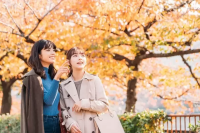













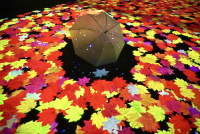














































![[2026] A walking map of famous plum blossom spots in Osaka!](https://resources.matcha-jp.com/resize/720x2000/2025/12/22-253767.webp)

